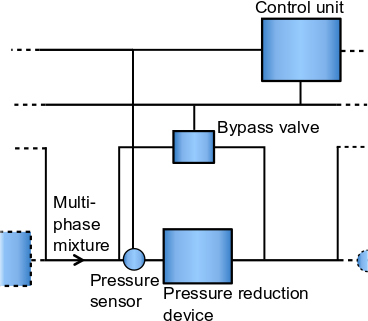HTL explained
Keynotes
- Plugging in the reactor is a common problem in HTL which can be solved either by the implementation of oscillators or a CSTR in combination with a PFR.
- Aqueous recovery benefits the final bio-crude product as the bio-crude yield increases along with the higher heating value while the biocrude composition mainly remains unchanged.
- Pressure reduction after the reactor can be done by the use of multiple tubes to utilize head losses and avoid wear on valves.
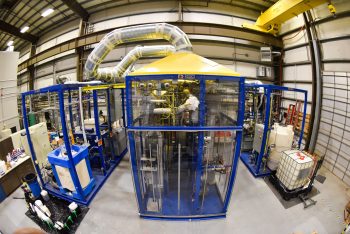
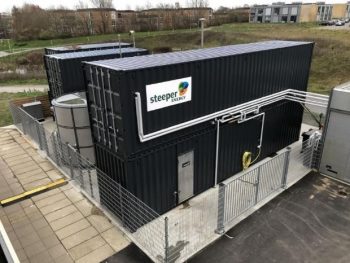
Further Reading
- Continuous Hydrothermal Liquefaction of Biomass
- Continuous Hydrothermal Liquefaction of Biomass in a Novel Pilot Plant
- Process development for hydrothermal liquefaction of algae feedstocks in a continuous-flow reactor
- Continuous hydrothermal co-liquefaction of aspen wood and glycerol with water phase recirculation
Example Applications:
- Plug flow reactor: Steeper Energy
- CSTR+PFR: PNNL
- Oscillation: Aarhus University
- Pressure reduction: Steeper Energy
- Recirculation: Steeper Energy
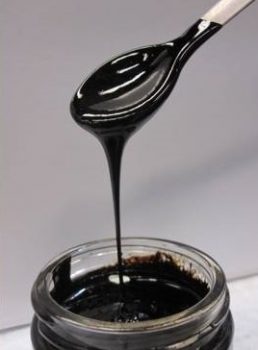
Experiments in hydrothermal liquefaction (HTL) are often conducted in batch reactors. Batch reactors are useful for fast catalyst screening, temperature and pressure effect investigation and optimization, and reaction kinetic studies as they need also small sample sizes and can handle a large range of dry matter concentrations. In addition, they do not suffer from mechanical challenges such as plugging. However, batch processes cannot be implemented to produce biofuels in quantities of thousands of barrels. Therefore, a technology maturation and commercialization rely on the development of continuous HTL processes. As the process takes place at high temperature (300 ˚C – 400 ˚C) and pressure (180 bar to 300 bar) the safety of the reactor is of vital importance. The reactor design is not very complex such as in the pyrolysis process. Usually, the reactors are long pipes behaving as a Plug Flow Reactor (PFR). Nevertheless, the use of a PFR increases the risk of plugging issues in the reactor due to the high pressure viscous multiphase slurry. The product consists of the bio-crude, an aqueous phase, solids (char), and a gaseous phase. The pressure let down and separation units are often very challenging in this process due to the presence of the multiphase at high pressure and temperature. Specifically, the presence of solids at high pressure often leads to wear on the components such as back-pressure valves, which induces the need for a robust pressure let down system.
Continuous stirred tank reactor and plug flow reactor combined in the HTL process
A Continuous Stirred Tank Reactor (CSTR) is a reactor tank equipped with an impeller to ensure mixing of the slurry. Moreover, the CSTR is in this case equipped with an electric heater, which ensures that the specified reaction temperature is achieved and maintained. The mixing of the slurry increases the turbulence of the flow, and thus increases the heat transfer in the reactor as well, and prevents sedimentation, Consequently, the mixture is more easily heated in the CSTR in comparison to the Plug Flow Reactor (PFR). However, the theoretical conversion of the biomass into biocrude is lower in the CSTR in comparison to solely using the PFR due to short residence time in the reactor, and scaling up is a shortcoming constrained by the high pressure. Thus, the residence time can be extended by implementing a PFR in series with the CSTR (see below) and thereby increasing the bio-crude yield. As a result, the flow mixing in the CSTR alleviates plugging issues in the PFR, especially with lignocellulosic feedstocks (typically woods). Consequently, the combination of a CSTR and a PFR shows great potential in the process of HydroThermal Liquefaction (HTL).
Experiments in hydrothermal liquefaction (HTL) are often conducted in batch reactors. Batch reactors are useful for fast catalyst screening, temperature and pressure effect investigation and optimization, and reaction kinetic studies as they need also small sample sizes and can handle a large range of dry matter concentrations. In addition, they do not suffer from mechanical challenges such as plugging. However, batch processes cannot be implemented to produce biofuels in quantities of thousands of barrels. Therefore, a technology maturation and commercialization rely on the development of continuous HTL processes. As the process takes place at high temperature (300 ˚C – 400 ˚C) and pressure (180 bar to 300 bar) the safety of the reactor is of vital importance. The reactor design is not very complex such as in the pyrolysis process. Usually, the reactors are long pipes behaving as a Plug Flow Reactor (PFR). Nevertheless, the use of a PFR increases the risk of plugging issues in the reactor due to the high pressure viscous multiphase slurry. The product consists of the bio-crude, an aqueous phase, solids (char), and a gaseous phase. The pressure let down and separation units are often very challenging in this process due to the presence of the multiphase at high pressure and temperature. Specifically, the presence of solids at high pressure often leads to wear on the components such as back-pressure valves, which induces the need for a robust pressure let down system.
Continuous stirred tank reactor and plug flow reactor combined in the HTL process
A Continuous Stirred Tank Reactor (CSTR) is a reactor tank equipped with an impeller to ensure mixing of the slurry. Moreover, the CSTR is in this case equipped with an electric heater, which ensures that the specified reaction temperature is achieved and maintained. The mixing of the slurry increases the turbulence of the flow, and thus increases the heat transfer in the reactor as well, and prevents sedimentation, Consequently, the mixture is more easily heated in the CSTR in comparison to the Plug Flow Reactor (PFR). However, the theoretical conversion of the biomass into biocrude is lower in the CSTR in comparison to solely using the PFR due to short residence time in the reactor, and scaling up is a shortcoming constrained by the high pressure. Thus, the residence time can be extended by implementing a PFR in series with the CSTR (see below) and thereby increasing the bio-crude yield. As a result, the flow mixing in the CSTR alleviates plugging issues in the PFR, especially with lignocellulosic feedstocks (typically woods). Consequently, the combination of a CSTR and a PFR shows great potential in the process of HydroThermal Liquefaction (HTL).

The combination of CSTR and PFR provides chemical energy recoveries in the bio-crudes between 50 – 87% depending on the type of feedstock and the dry matter concentration in the biomass slurry.
Hydraulic oscillation in the HTL process
Hydraulic oscillation in the HTL process can be another solution to reduce the risk of plugging in the PFR. A patented hydraulic oscillation method is implemented to increase turbulence in the flow, which leads to improved heat transfer and decreases the viscosity in a part of the production line while the average velocity and thus the reaction time remains unaffected (see diagram below).
The hydraulic oscillation system consists of two pistons as shown below. Each piston has two separated sections. One section is subject to the HTL slurry, whereas the other side is linked to a high-pressure hydraulic oil system. The hydraulic site controls the pistons to make sure that when one piston is pushed down, the other retracts. This must be performed continuously in alternation to ensure that the mixture in the reactor behaves as presented in the diagram above.
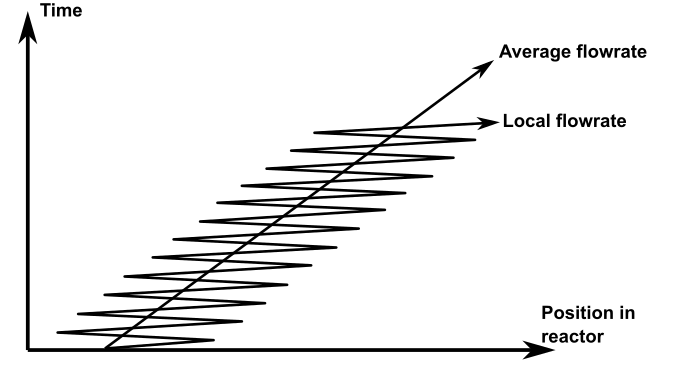
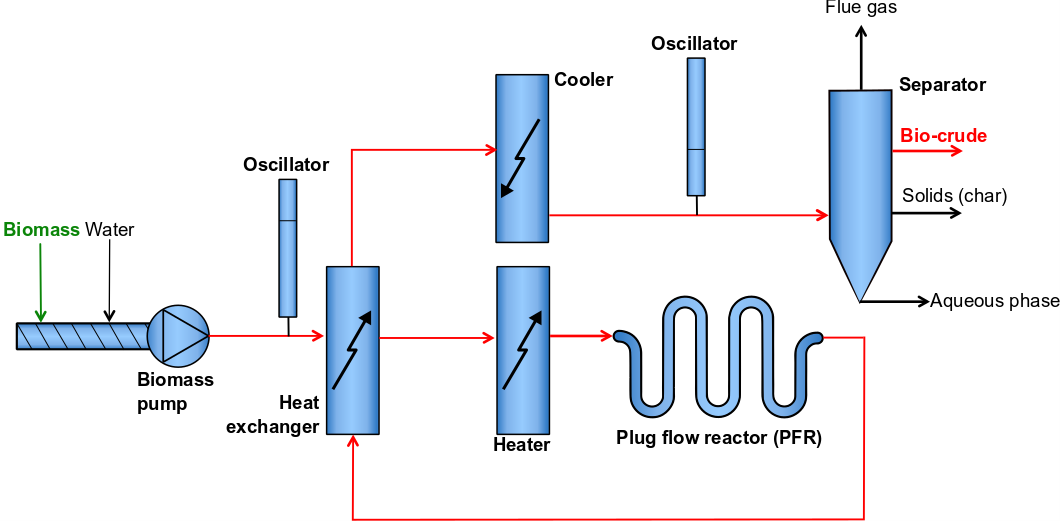
Results from test facilities show that heat recovery of up to 85 % is obtainable. Furthermore, results showed that the chemical energy recoveries in the bio-crudes were between 33.6 % and 48.1 % depending on the feedstock. So far, no improvement in bio-crude quality or yield has been documented by the use of hydraulic oscillation.
Recovery system
A recovery system for the aqueous phase is crucial for the performance and economy of the HTL system. The recovery system patented by Steeper Energy recirculates the aqueous phase, which contains liquid organic compounds and dissolved salts such as homogeneous catalysts in the form of potassium and sodium. Furthermore, a bleed stream is introduced to prevent trace elements like chloride to accumulate in the system. Thereby, the carbon recovery in the bio-crude is increased and the water containing catalysts are recycled, which benefits the economy of the system.
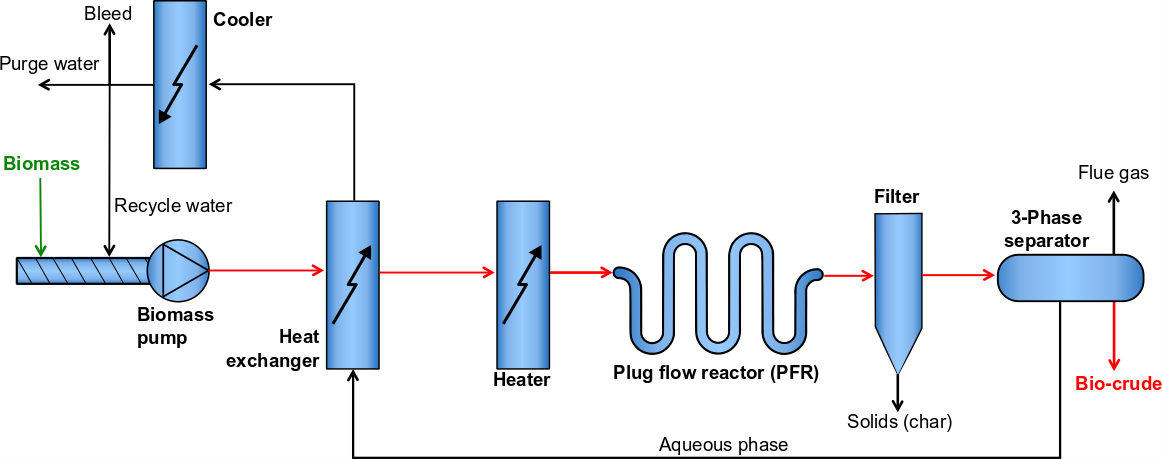
To recycle the aqueous phase, a 3-phase separator must be included. The patent includes a 3-phase separator presented in the figure below. The concept is that the reactor products enter the tank through a distributor, for instance, a diffuser to separate the liquids from the gaseous phase. The gaseous phase escape through the top of the tank. The aqueous phase and the bio-crude will separate because of density differences. Eventually, there will be an overflow of bio-crude as indicated in the figure. To enhance the separation of the bio-crude and the aqueous phase perforated baffles, lamella plates or meshes can be inserted to calm the flow, whereby a more efficient separation is obtained.
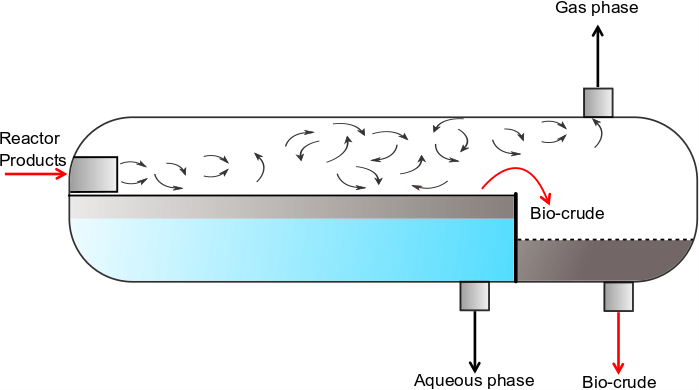
Experiments have shown that the bio-crude yield can be enhanced with approximately 4 wt. % while the composition of the bio-crude mainly remains unchanged with the use of this invention. Furthermore, the higher heating value of the bio-crude shows potential to increase by more than one MJ/kg as a result of the aqueous recirculation.
Pressure reduction
Pressure reduction in HTL cannot happen through a single valve due to the high velocities and abrasive components, which increases the risk of wear on the valve and the seat etc. Thus, a pressure let down system (patented by Steeper Energy) has been suggested as a solution to the pressure reduction. The technology implies that the reaction products flow through a series of long tubes, and hence, the pressure is reduced due to head losses. Thereby, the pressure loss depends strongly on the flow velocity, the diameter and length of the tubes, the density, and the viscosity of the reaction products. It is suggested that the velocity in the tubes preferably is 10 m/s and the length of the pipes should be within the range of 10 to 100 m with a diameter of 2.5-10 mm. Furthermore, it is proposed that the tubes are chosen to be shaped as a helix in order to reduce the space needed for the pressure reduction system.
With fixed dimensions of the tubes, a stepwise pressure reduction is advantageous due to variations in the composition and thus the condition of the reaction products including the density and viscosity. Since the pressure loss depends on the density and viscosity of the fluid, the pressure loss is not necessarily consistent at any given time. Thus, a pressure let down system has been developed to reduce the pressure stepwise as presented in the figure below, which shows one of the repeated sections in the pressure reduction system. Each pressure let down step consists of a pressure reduction device and a bypass piping controlled by an on/off closing valve. Furthermore, a pressure sensor communicates with a control unit, which determines the opening/closing of one or more valves based on predetermined pressure limits. Thereby, the pressure is gradually decreased and the risk of wear is significantly reduced.
